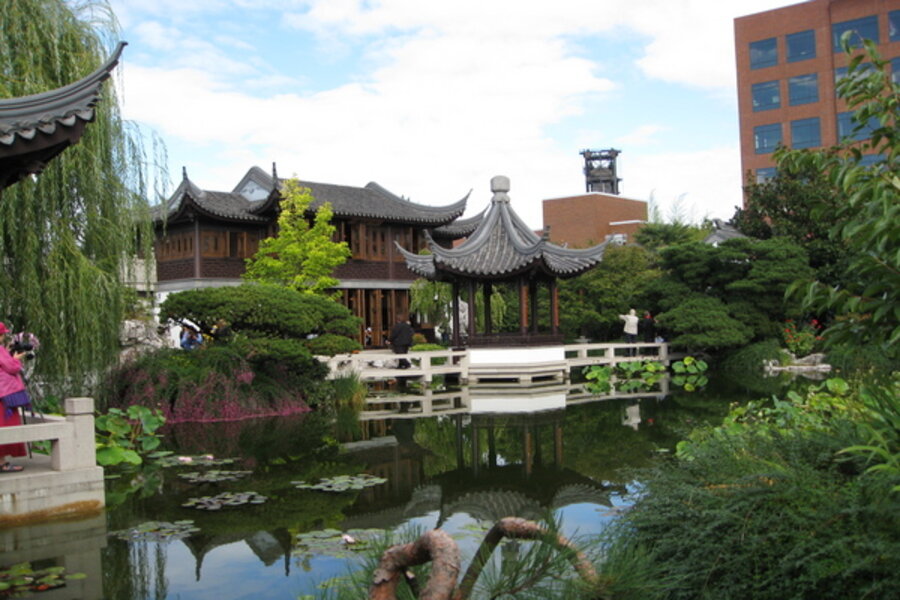Garden 'siteseeing' in India, the Philippines, and Australia
Loading...
Diggin' It likes to go "siteseeing" a few times a month, visiting garden sites and blogs around the US and all over the world to find out what gardeners are doing and growing.
Now, as summer winds down in the Northern Hemisphere and autumn is on its way (or already here for some of you), it might be fun to dream of tropical gardens – with bright colors, lush growth, and lots of heat.
At Flowers of India, a number of contributors -- what they call a “caravan of flower-crazy people” maintain a wonderful site that not only introduces the visitor to tropical flowers, but also to unusual plants and how they’re used.
I was fascinated by the living root bridges, where roots of the rubber tree (yes, the one you’ve grown as a houseplant) are trained to reach across a river or stream to form a bridge.
US gardeners who enjoy crinum lilies will enjoy reading about Woodrow’s crinum lily, which was thought to be extinct, but rediscovered six years ago.
A gardener in South India invites us to visit her tropical garden. Some of the plants she grows will be familiar to you – cleome, geranium (pelargonium), hibiscus. But many seem very exotic to someone in a temperate-climate -- sunset bells, Chinese hat, chalice vine, and fire spike.
I was interested to learn that “it is usual in South Indian homes to have a bowl full of water with flowers floating in it, kept at the hallway near the entrance. It denotes welcome and cheer.” Isn’t that a nice tradition?
Off to the Philippines
In the Philippines, Solitude Rising chronicles the efforts of a Salt Lake City, Utah, resident to create “an integrated farm and tropical garden retreat” in Manila.
You’ll get to see and learn more about the golden shower tree, desert roses (is this what Sting sang about?), blue ginger, Mussaendas named for first ladies or female presidents, red-stemmed thalia, and many more colorful delights.
Down Under
If you worry about the destruction caused by deer and rabbits in your garden, those common pests may not seem so bad when you realize what gardeners in Cooktown, Cape York, Queensland, Australia, have to put up with.
According to Frangipini Gardens, the destructive pests include Australian brush turkeys, orange-footed scrub fowl, and giant scorpions. You might also be visited by a wallaby family (looking a bit like the 3 Bears).
In this garden, you'll see lots of plants you may be growing as houseplants – hoya, amaryllis – outdoors in their full glory. I love the tropical plants, but think I’d prefer to avoid the scorpions.
If you'd like to suggest a special garden site or blog that you think ought to be part of a future 'siteseeing' expedition on Diggin' It, please leave a link to it in the comments section below.
Judy Lowe is one of nine garden writers who blog regularly on Diggin' It. She's a former Monitor staffer and the author of 10 garden books, with the 11th due out in January 2011.





